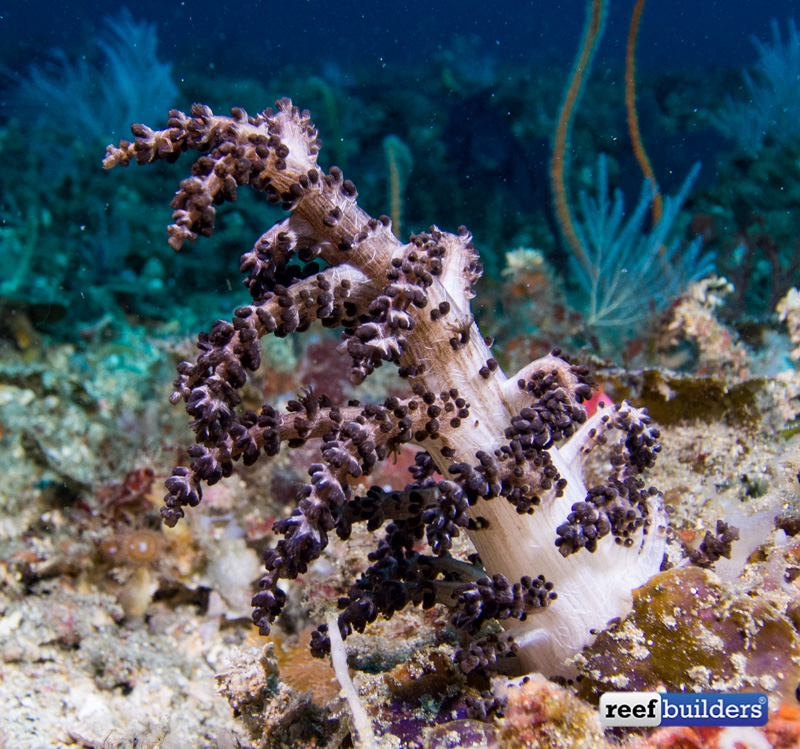The Christmas Tree Coral is a very unusual species of Studeriotes soft coral which, due to its superficial resemblance to a christmas tree, used to show up quite more often at the Local Fish Store around the holidays. Since the christmas tree coral is not exactly pretty, it has mostly fallen out of favor with coral reef keepers, regardless of season, but this coral is very unique and worthy of a bit more attention.
Christmas Tree corals are members of the genus Studeriotes; we don’t know why some aquarium references label it as a species of Sphaerella, a genus of Fungi, but in any case, it’s a Studeriotes. There are currently six known species of Studeriotes, all of which share the peculiar behavior of being able to completely contract the trunk and branches into the base, forming what appears to be, for lack of a better word, a sphincter. This behavior and contracted appearance was responsible for its other common name of ‘sphincter coral’, although this moniker has understandably fallen out of favor.

Compared to the Sarcophyton, Dendronephthya, Nephthea and Stereonephthea, Christmas tree corals are truly the ugly ducklings of the soft corals in any light, except that they don’t grow up to be beautiful at all. Maybe, when they are fully extended and show a nice symmetrical body shape they may look neat, but then they lose more beauty pageant points when they close up into a sphincter shape on a daily cycle.
The only redeeming quality of Studeriotes is that they are hardy, and some particularly jet black specimens can be a bold addition to the home aquarium, contrasting strongly with all the light and bright colored corals we usually prefer.

Christmas tree corals are non-photosynthetic and therefore rely on capturing particulate foods from the water. Despite this, Studeriotes can fare pretty well in the home aquarium, especially in ecology-rich reef aquariums and with regular feeding of fine suspended foods to the aquarium water. Studeriotes doesn’t attach to rocks like other soft corals, and instead prefers to have its base buried in fine sand, making these corals especially neat additions to refugium substrates and deep sand beds.
Other captive care requirements are pretty straightforward, moderate flow speeds and balanced aquarium chemistry seems to be enough to these corals looking their ‘best’. As we’ve already confessed, christmas tree corals are not the most attractive corals on the reef, but their interesting behavior and life history makes them at least worthy of consideration in some types of aquarium systems. For further care information about Studeriotes, give a look at Michael Janes’ contribution to Advances in Coral Husbandry.



